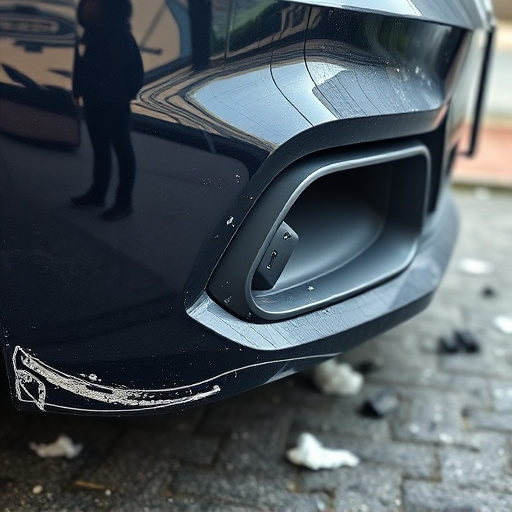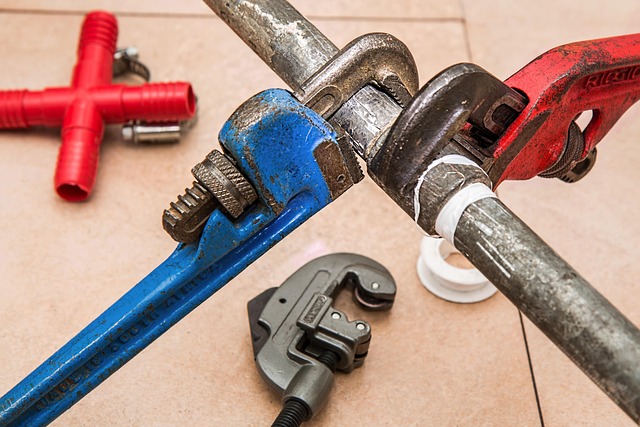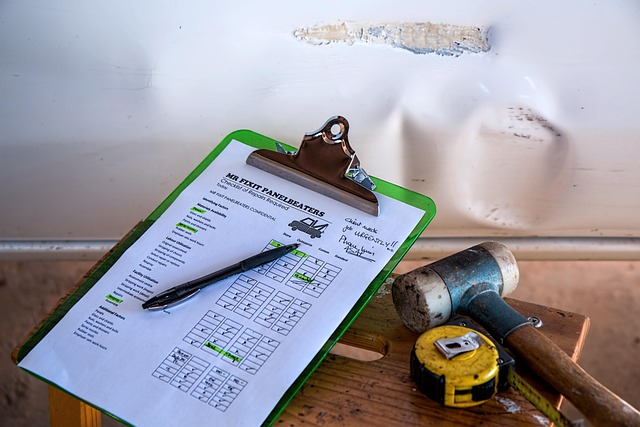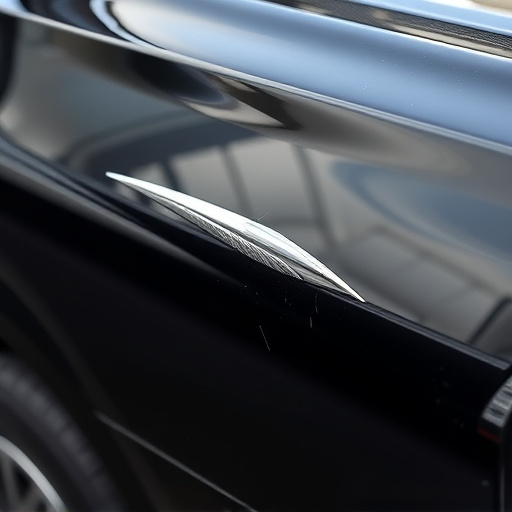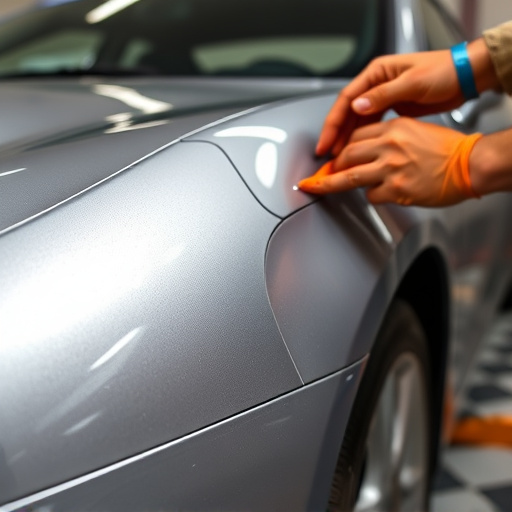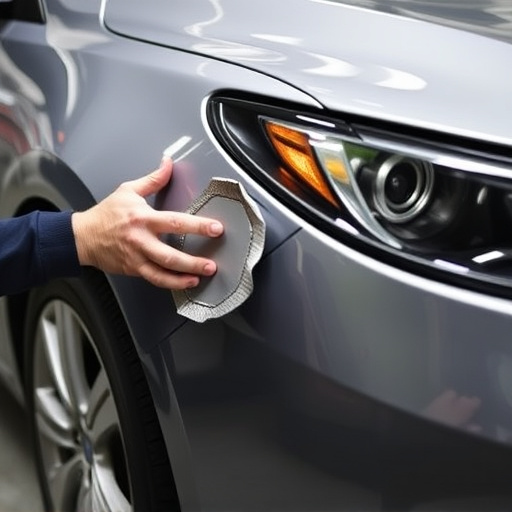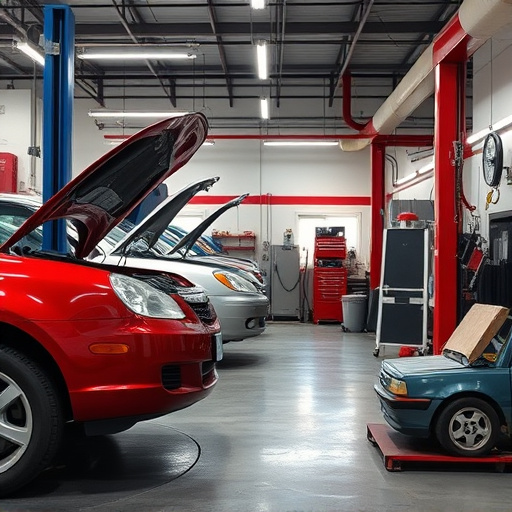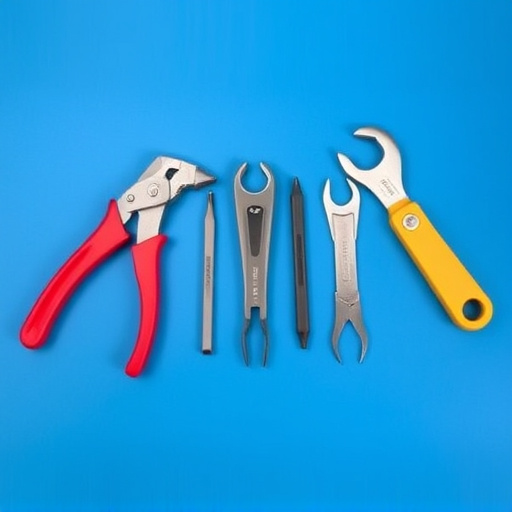Silicon bronze welding enhances structural panel restoration and auto body services with superior durability and corrosion resistance. Before welding, surfaces must be cleaned and defects repaired. Mastery requires sharp tools, clean workpieces, precise techniques like beveling edges, consistent pressure, low current settings, and temperature monitoring to prevent damage.
Silicon bronze, an alloy that combines the strength of copper with the hard-wearing properties of silicon, is an excellent choice for restoring structural panels due to its superior corrosion resistance and durability. This article provides comprehensive guidance on successful silicon bronze welding techniques. From understanding the unique properties and advantages of this alloy to essential preparation steps and expert tips, we offer a thorough roadmap for achieving optimal results in your restoration projects.
- Understanding Silicon Bronze: Properties and Advantages
- Preparation Steps for Optimal Welding Results
- Techniques and Tips for Successful Silicon Bronze Welding
Understanding Silicon Bronze: Properties and Advantages
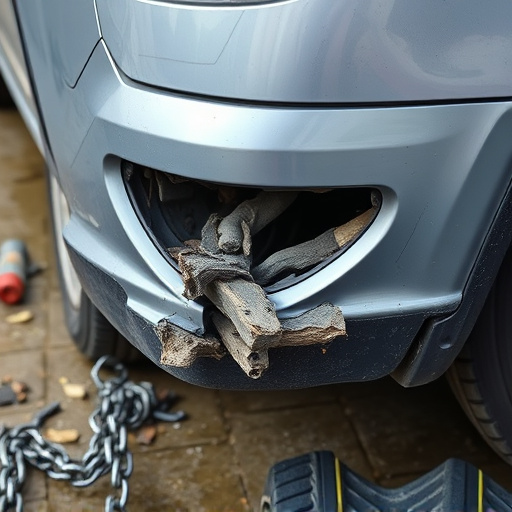
Silicon bronze is a unique alloy that has gained significant attention in the world of metalworking and restoration projects. This metal is characterized by its exceptional strength, corrosion resistance, and remarkable welding properties, making it an ideal choice for various applications. When it comes to restoring structural panels, silicon bronze welding offers a game-changer solution. Its advantages are numerous; it provides superior durability compared to traditional metals, ensuring that the restored panels can withstand the rigors of everyday use.
In the realm of auto body services and vehicle collision repair, silicon bronze’s ability to retain its integrity after welding is a significant benefit. Unlike some base metals, silicon bronze does not suffer from thermal shock, ensuring that the welding process doesn’t compromise the structural integrity of the panel. This property makes it particularly useful in car collision repair, where precision and strength are paramount. Moreover, silicon bronze’s corrosion resistance ensures that restored panels remain in top condition for extended periods, which is a significant advantage over other metals commonly used in auto body services.
Preparation Steps for Optimal Welding Results
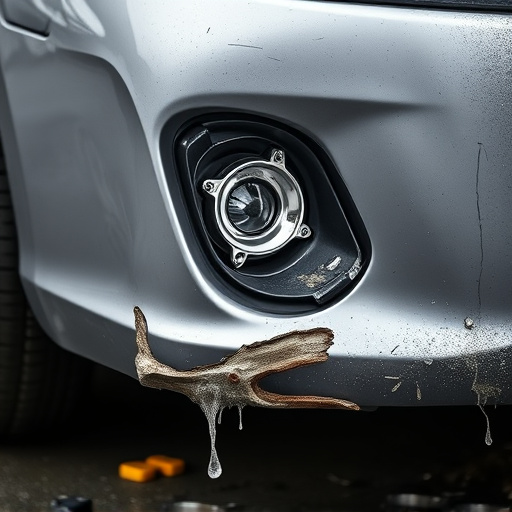
Before beginning the silicon bronze welding process for restoring structural panels, several preparation steps are crucial to ensure optimal results. Start by thoroughly cleaning the panel surfaces to eliminate any dirt, grease, or debris that could hinder the weld. This involves using a suitable degreasing agent and a fine-grit sandpaper to achieve a clean, smooth base. Next, inspect the panel for any defects, such as dents or scratches, which should be repaired prior to welding using techniques like dent removal or body filler, commonly offered by professional vehicle repair services.
Additionally, ensure that the welder and electrodes are compatible with silicon bronze, as improper selection may lead to subpar welds. Proper grounding is another essential step; ground the panel and the welding machine for optimal conductivity. Lastly, practice good safety measures by wearing protective gear, including gloves and a respirator, to safeguard against harmful fumes during the welding process. These preparation steps are vital in achieving strong, lasting bonds when repairing structural panels with silicon bronze welding techniques, particularly within the context of collision repair shops.
Techniques and Tips for Successful Silicon Bronze Welding
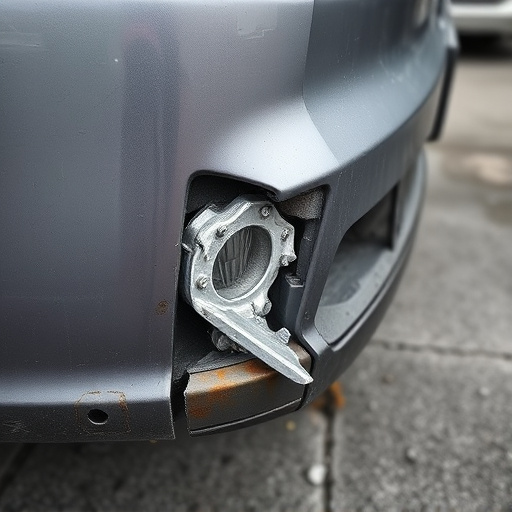
Mastering silicon bronze welding involves a combination of precise techniques and thoughtful tips. First, ensure your tools are in top condition; dull or contaminated equipment can negatively impact the weld quality. Clean your workpiece surfaces thoroughly to eliminate any contaminants that could hinder the fusion process. When preparing the metal, create a slight bevel on the edges to be welded, this helps in achieving a stronger bond.
During the welding process, maintain consistent pressure and a steady arc. Adjusting these factors can prevent porosity and ensure a strong, sound weld. For best results, use a low current setting for better control. As you weld, monitor the temperature carefully; silicon bronze has a high melting point, so overheating can cause distortion or even damage to the material. In a car body shop, where precision is key, these techniques and tips are crucial for achieving seamless repairs in vehicle bodywork.
Silicon bronze welding offers a durable and aesthetically pleasing solution for restoring structural panels, leveraging the material’s unique properties to create strong, corrosion-resistant bonds. By following the preparation steps and techniques outlined in this guide, restorers can achieve professional results that not only enhance structural integrity but also preserve the historical character of these valuable panels. Whether tackling historic restoration projects or modern repairs, mastering silicon bronze welding is an invaluable skill for ensuring long-lasting, high-quality outcomes.
